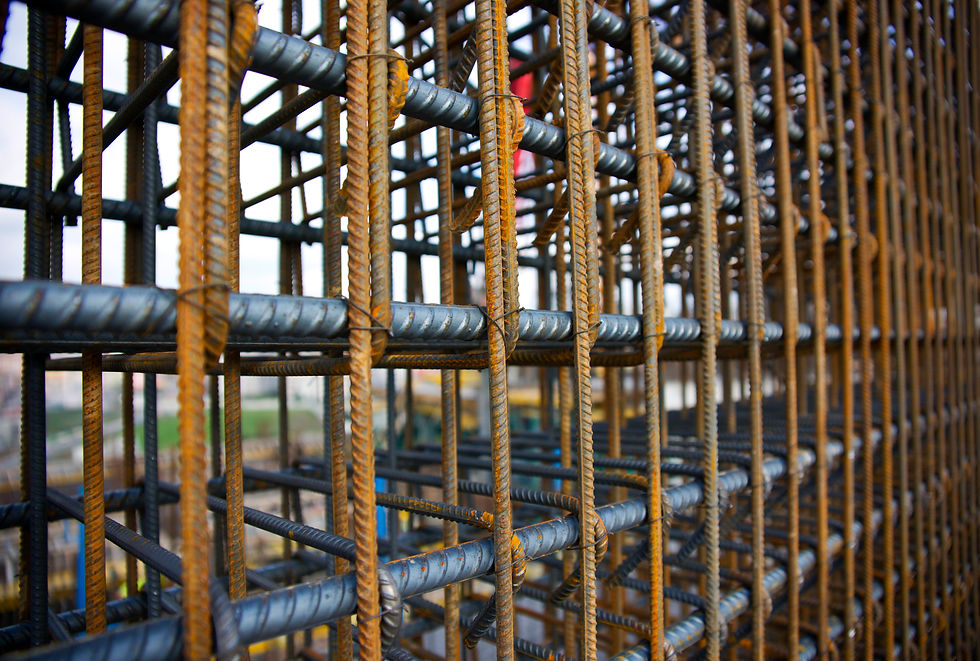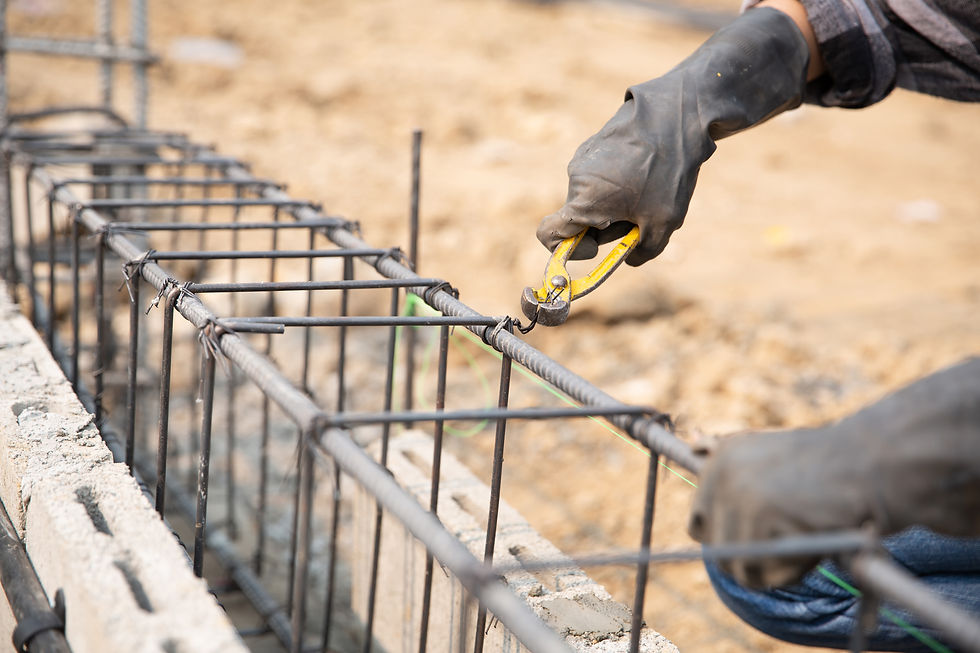The Ultimate Guide to Choosing the Right Concrete and Plastic Spacers
- straight2site
- Jul 17, 2024
- 2 min read

Selecting the Right Spacer
Concrete and plastic spacers are essential components in maintaining the position of rebars within concrete structures before pouring. These spacers ensure a consistent clear distance (cover) between the concrete surface and the rebar, preventing corrosion and potential concrete spalling. Once the concrete is poured, spacers become a permanent part of the structure. While various types of spacers share common features, selecting the appropriate one can significantly enhance construction efficiency and safety. The selection of spacers hinges on several key factors:
Height of Spacer
The primary specification for spacers is their height, which determines the concrete cover for the rebar. This dimension is crucial when ordering spacers. Multi-dimension spacers offer varying heights to support rebars depending on their installation position. For projects with different concrete cover thicknesses, multi-dimension spacers with suitable dimensions are a practical choice.
Firmness of Subgrade
Spacers placed under rebar meshes are subjected to forces from above, including the weight of rebars, workers, and machinery. If the contact area between spacers and the subgrade (soil or stone) is inadequate, they may settle during construction, reducing the required concrete cover thickness. In cases where the subgrade is not firm, spacers with sufficient contact areas or additional plates to distribute the load are necessary.
Material
The material of the spacer requires careful consideration, as each type has its advantages and drawbacks. Plastic spacers, though serviceable, are generally weaker than their steel or concrete counterparts. They should be chosen cautiously for heavy rebar cages or areas with high foot traffic. Steel spacers are robust but may cause rust spots on exposed concrete surfaces, making them unsuitable for visible areas. Simple concrete spacers are versatile and suitable for most structures, provided their grade matches the surrounding concrete to prevent localized cracking and maintain structural integrity.

There are several common methods for connecting spacers to rebar:
Horizontal Placement: Spacers placed on horizontal surfaces support the steel rebar above. The weight and fixation of the steel mesh typically hold the spacers in place without binding connections. Long plastic spacers (continuous spacers) are cost-effective for low-load areas and non-critical locations.
Tie Wire or Hooks: Spacers with tie wires or plastic/steel hooks securely connect to the rebar, ensuring they stay in position, especially when vertically placed. This method is critical for maintaining the correct placement when the rebar cage is lifted or subjected to vibration during concrete pouring.
Central Holes: Spacers with central holes allow for the insertion of rebar, ensuring a firm connection that prevents displacement even if the rebar moves.
Conclusion
Selecting the right concrete or plastic spacer is vital for the durability and integrity of concrete structures. By considering factors such as height, subgrade firmness, material, and connection methods, you can ensure optimal performance and safety in your construction projects. Proper spacer selection not only enhances construction efficiency but also contributes to the long-term resilience of the structure.
Comments